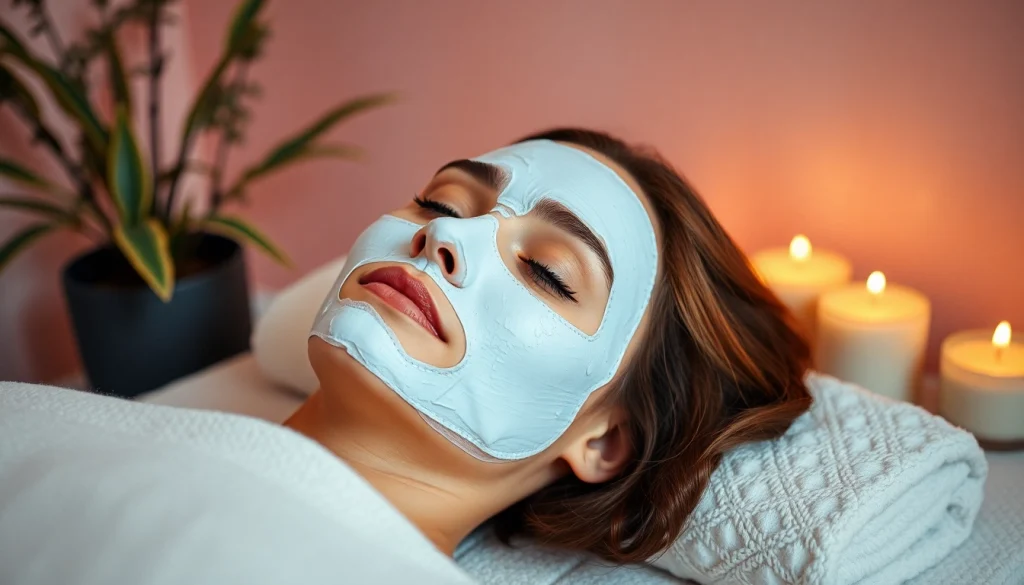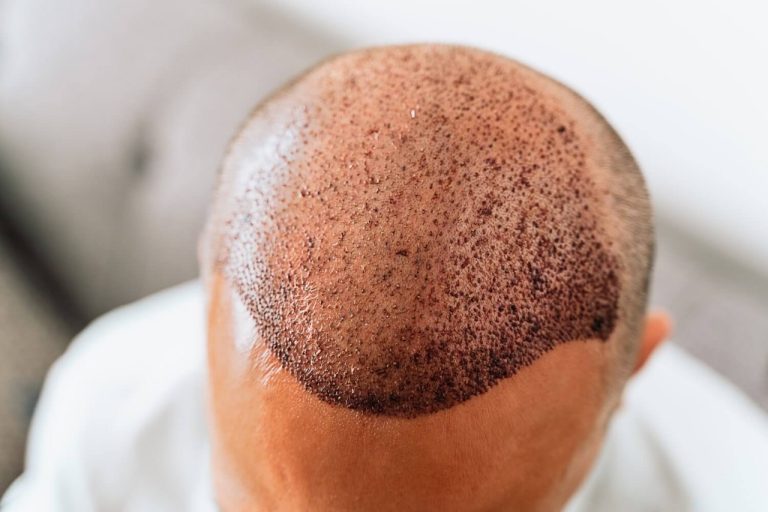
Understanding Facial Masks: Types and Benefits
What is a Facial Mask?
A facial mask is a skincare product designed to be applied to the skin for a certain period, delivering concentrated ingredients that target various skin issues. Often thicker than regular creams, facial masks provide an opportunity for enhanced absorption and deeper penetration of beneficial compounds into the skin. Known for their versatility, masks can be used for different skincare goals, including hydration, nourishment, cleansing, and exfoliation. Whether you’re looking to brighten your complexion or hydrate dry patches, a facial mask can be an essential addition to your skincare regimen.
Different Types of Facial Masks
Facial masks come in various forms, each tailored for specific skin concerns and types. Here’s a closer look at some popular types:
- Cream Masks: Typically hydrating, cream masks are thick and rich, making them ideal for dry or sensitive skin. They help moisturize and soothe irritation.
- Clay Masks: Excellent for oily and acne-prone skin, clay masks absorb excess oil and impurities, helping to clarify and detoxify the skin.
- Sheet Masks: These pre-cut face-shaped masks are soaked in serums rich with ingredients designed to hydrate and treat the skin. They are convenient for travel and quick treatments.
- Gel Masks: Lightweight and refreshing, gel masks are typically gel-based and great for hydrating and cooling the skin, suitable for all skin types.
- Exfoliating Masks: These masks include physical or chemical exfoliants, removing dead skin cells and promoting cell turnover, leaving the skin smooth and radiant.
Key Benefits of Using Facial Masks
Facial masks offer numerous benefits. Here are some key advantages:
- Deep Cleansing: Masks can provide thorough cleansing, drawing out impurities and excess oil from the pores.
- Hydration: Many masks are infused with hydrating ingredients that help restore moisture to the skin, which is especially beneficial for dry and dehydrated skin.
- Boosting Radiance: Regular use of facial masks can enhance skin tone and brightness, giving a healthy and vibrant appearance.
- Targeted Treatments: Different masks cater to specific skin needs, whether it’s dealing with acne, dark spots, or signs of aging.
- Relaxation and Self-Care: The process of applying a mask can be a soothing ritual, contributing to overall mental well-being.
How to Choose the Right Facial Mask for Your Skin Type
Identifying Your Skin Type
Choosing the right facial mask begins with understanding your skin type. The main categories include:
- Oily Skin: Characterized by excess sebum production, oily skin often experiences shine and may suffer from acne.
- Dry Skin: This type has a lack of moisture, leading to flakiness, tightness, and sometimes irritation.
- Combination Skin: A mix of oily and dry areas, combination skin generally has an oily T-zone (forehead, nose, and chin) with dry or normal cheeks.
- Sensitive Skin: Skin that reacts easily to products, resulting in redness, irritation, and discomfort.
Best Facial Masks for Oily, Dry, and Combination Skin
Different skin types require different types of facial masks. Here are tailored suggestions:
- For Oily Skin: Clay masks or charcoal masks work well to absorb excess oil and minimize pores, reducing acne flare-ups.
- For Dry Skin: Cream or hydrating masks, formulated with ingredients like hyaluronic acid and glycerin, help replenish moisture and restore softness.
- For Combination Skin: Look for gel masks that hydrate while offering a light exfoliation, targeting oily areas without overwhelming dry patches.
- For Sensitive Skin: Choose soothing masks with calming ingredients like aloe vera and chamomile to avoid irritation.
Ingredient Analysis: What to Look For
When selecting a facial mask, pay close attention to the ingredients:
- Humectants: Ingredients like glycerin and hyaluronic acid draw moisture into the skin.
- Exfoliants: AHAs (alpha hydroxy acids) and BHAs (beta hydroxy acids) help to remove dead skin cells and promote cell turnover.
- Antioxidants: Ingredients such as vitamin C and green tea extract help to protect the skin from environmental stressors.
- Soothing Agents: Aloe vera, calendula, and chamomile can calm irritated skin.
DIY vs. Store-Bought Facial Masks: Pros and Cons
Benefits of DIY Facial Masks
DIY facial masks can be an effective, fun, and economical option. Here are several benefits:
- Customization: You can tailor ingredients to suit your specific skin concerns and preferences, creating a truly personalized treatment.
- Natural Ingredients: Many DIY recipes feature natural ingredients that are free from harsh chemicals, often safer for sensitive skin.
- Cost-Effective: DIY masks can often be made from ingredients found in your pantry, making them budget-friendly.
Consumer Favorite Store-Bought Options
Store-bought masks offer convenience and consistency. Here are popular types:
- Highly-Effective Formulations: Brands often invest in research to create effective formulations with proven results.
- Convenience: Store-bought masks save time, as they’re ready to use without the need for mixing or preparation.
- Variety: A wide range of options are available, catering to various skin types and concerns, making it easy to find one suited for your needs.
Comparing Costs and Effectiveness
Both options have their own cost structures and effectiveness styles. When comparing DIY masks against store-bought ones, consider these aspects:
- Cost: DIY masks are generally cheaper but may require a small initial investment in ingredients. Store-bought masks offer a broader price range depending on brand and ingredients.
- Effectiveness: Store-bought masks often contain active compounds at optimal concentrations, potentially leading to quicker results compared to DIY masks.
- Convenience: While DIY masks require preparation and application time, store-bought options provide a straightforward method that suits busy lifestyles.
Application Tips for Maximum Effectiveness
Preparing Your Skin Before Application
Preparation is essential for optimal results. Follow these steps to prep your skin before applying a facial mask:
- Cleanse: Start with a gentle cleanser to remove makeup, dirt, and oil.
- Exfoliate (if needed): Exfoliation helps remove dead skin cells, allowing the mask to penetrate better.
- Steam (optional): Steaming opens pores, maximizing the mask’s effectiveness.
Step-by-Step Mask Application Guide
Once your skin is prepared, follow these steps for application:
- Apply: Use clean fingers or a brush to apply the mask evenly across your face, avoiding sensitive areas like the eyes and mouth.
- Relax: Allow the mask to sit for the recommended time, typically 10-20 minutes. Use this time to relax and enjoy the moment.
- Rinse Off: Use lukewarm water and a soft cloth to gently remove the mask, ensuring all residue is gone.
Post-Mask Care: What Comes Next?
After removing the mask, follow these post-application steps for best results:
- Tone: Apply a toner to restore pH balance and prepare the skin to absorb subsequent products.
- Moisturize: Lock in hydration with a moisturizing cream or lotion suitable for your skin type.
- Sunscreen: If applying products during the day, don’t forget to apply sunscreen to protect your skin.
Tracking Results: How to Measure the Impact of Facial Masks on Your Skin
Setting Skincare Goals
To gauge the effectiveness of facial masks, it’s essential to have clear skincare goals. Ask yourself what you want to achieve: Is it improved hydration, reduced acne, or enhanced radiance? Setting these goals will provide a framework for what to monitor over time.
Recording Changes and Improvements
Keep a skincare journal to track your progress. Document the types of masks used, frequency, and observations regarding skin changes. Include dates and photographs to visualize progress and better understand what works best for your skin.
Adjusting Your Skincare Routine Over Time
As your skin changes due to factors like weather, diet, or hormonal fluctuations, you may need to adapt your skincare routine, including your choice of masks. Stay observant and flexible, changing your mask types as necessary to ensure the best skincare results.






